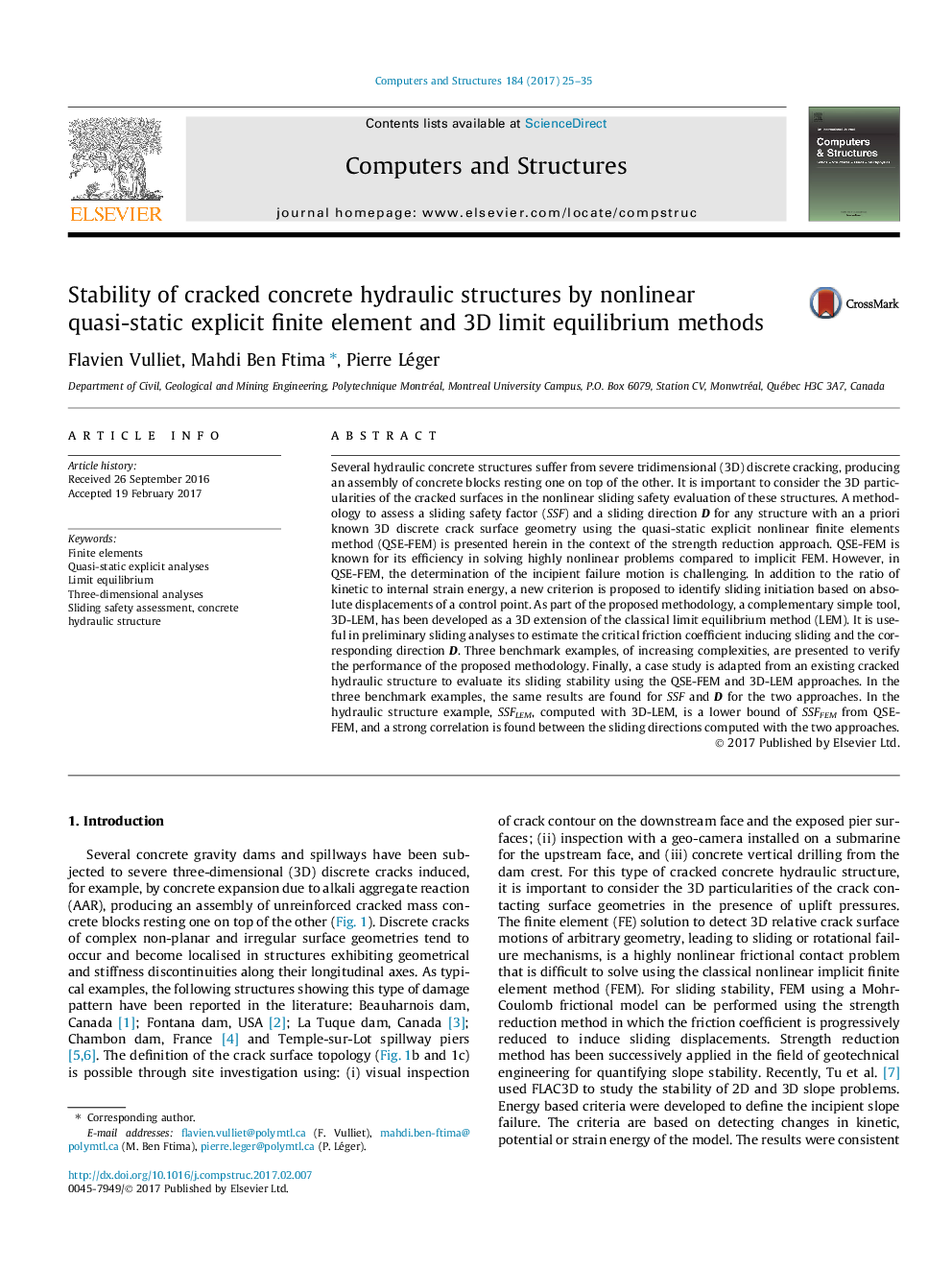| کد مقاله | کد نشریه | سال انتشار | مقاله انگلیسی | نسخه تمام متن |
|---|---|---|---|---|
| 4965797 | 1448461 | 2017 | 11 صفحه PDF | دانلود رایگان |
عنوان انگلیسی مقاله ISI
Stability of cracked concrete hydraulic structures by nonlinear quasi-static explicit finite element and 3D limit equilibrium methods
دانلود مقاله + سفارش ترجمه
دانلود مقاله ISI انگلیسی
رایگان برای ایرانیان
موضوعات مرتبط
مهندسی و علوم پایه
مهندسی کامپیوتر
نرم افزارهای علوم کامپیوتر
پیش نمایش صفحه اول مقاله

چکیده انگلیسی
Several hydraulic concrete structures suffer from severe tridimensional (3D) discrete cracking, producing an assembly of concrete blocks resting one on top of the other. It is important to consider the 3D particularities of the cracked surfaces in the nonlinear sliding safety evaluation of these structures. A methodology to assess a sliding safety factor (SSF) and a sliding direction D for any structure with an a priori known 3D discrete crack surface geometry using the quasi-static explicit nonlinear finite elements method (QSE-FEM) is presented herein in the context of the strength reduction approach. QSE-FEM is known for its efficiency in solving highly nonlinear problems compared to implicit FEM. However, in QSE-FEM, the determination of the incipient failure motion is challenging. In addition to the ratio of kinetic to internal strain energy, a new criterion is proposed to identify sliding initiation based on absolute displacements of a control point. As part of the proposed methodology, a complementary simple tool, 3D-LEM, has been developed as a 3D extension of the classical limit equilibrium method (LEM). It is useful in preliminary sliding analyses to estimate the critical friction coefficient inducing sliding and the corresponding direction D. Three benchmark examples, of increasing complexities, are presented to verify the performance of the proposed methodology. Finally, a case study is adapted from an existing cracked hydraulic structure to evaluate its sliding stability using the QSE-FEM and 3D-LEM approaches. In the three benchmark examples, the same results are found for SSF and D for the two approaches. In the hydraulic structure example, SSFLEM, computed with 3D-LEM, is a lower bound of SSFFEM from QSE-FEM, and a strong correlation is found between the sliding directions computed with the two approaches.
ناشر
Database: Elsevier - ScienceDirect (ساینس دایرکت)
Journal: Computers & Structures - Volume 184, May 2017, Pages 25-35
Journal: Computers & Structures - Volume 184, May 2017, Pages 25-35
نویسندگان
Flavien Vulliet, Mahdi Ben Ftima, Pierre Léger,